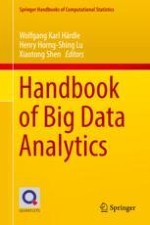2018 | OriginalPaper | Buchkapitel
21. Beta-Boosted Ensemble for Big Credit Scoring Data
verfasst von : Maciej Zieba, Wolfgang Karl Härdle
Erschienen in: Handbook of Big Data Analytics
Aktivieren Sie unsere intelligente Suche, um passende Fachinhalte oder Patente zu finden.
Wählen Sie Textabschnitte aus um mit Künstlicher Intelligenz passenden Patente zu finden. powered by
Markieren Sie Textabschnitte, um KI-gestützt weitere passende Inhalte zu finden. powered by
